Multifamily Buildings with Multiple Design Criteria
EXPANSION JOINTS
Architectural expansion joints are necessary, predetermined gaps in large structures that are designed to absorb environmental movement in buildings. When done right, they tend to be integrated with their construction such that they blend in with a design and almost disappear. In large multifamily buildings, they are a necessity, particularly where buildings are segmented into different sections, or if they attach to another structure, such as a parking garage commercial use.
Building sections can move due to several common reasons. When it comes to expansion control in buildings, there are three types of movement that need to be accommodated:
- Thermal Forces This type of movement is most typical and is caused by daily environmental temperature changes in and around the structure. Thermal movement is primarily “one-directional” in nature and is the result of the expansion and contraction of structural elements as they are affected by heat, cold and humidity levels. The amount of thermal movement is typically approximately 10-25 percent of the nominal joint size. That means the maximum cold temperature size (i.e., when the building contracts and the joint expands) should be 10-25 percent more than the nominal joint size and the minimum warm temperature size (i.e., when the building expands and the joint contracts) should be 10-25 percent less than the nominal joint size. If expansion joints aren’t put in, then thermal expansion and contraction can cause buckling of surfaces in place like roofs and interior floors.
- Seismic Activity This involves the shifting of the earth’s tectonic plates (i.e., earthquakes, tremors, etc.) and shifts along fault lines is the source of seismic activity. Seismic movement may be horizontal, vertical, in shear, or a combination of all three. Seismic expansion joint widths may need to increase with higher floor levels to accommodate the additional, cumulative movement that needs to be addressed. These joints must have the capacity for movement of plus or minus 50-100 percent of the nominal joint size associated with them. Note that minor earthquakes are far more prevalent than severe mega-quakes like the 1994 magnitude 6.7 Northridge quake in California, or the 9.1 Christmastime earthquake (and tsunami) off the coast of Sumatra in 2004. When it comes to expansion joint systems, it is important to select systems that can “reset” themselves after a minor seismic event and allow workers to reposition panels easily.
- Wind-Loads Movement induced by high winds can force the structure to sway. This movement is normally perpendicular and/or parallel to the joint. This is common where a low horizontal building span meets with a taller vertical element, such as the lobby of a multifamily or mixed-use building is adjacent to a high-rise building section. Movement in these joints is typically on the order of 50 percent. Over time, the near-constant effects of wind pressure on the sides of buildings can lead to serious issues such as aerodynamic instability, torsion or swaying, erosion of certain building materials, and cladding failure due to wind load or impact of debris. In extreme cases, it can lead to structural failure and damage to people and property. Therefore, when designing a structure, that structure must be able to both withstand high wind loads, but also work with them. As with seismic activity, expansion joint systems should be able to “flex” and yet remain in place as the building sways or torques.
By properly addressing all of these conditions, the building can be protected from the movement that will invariably occur and avoid the resulting damage that is possible.
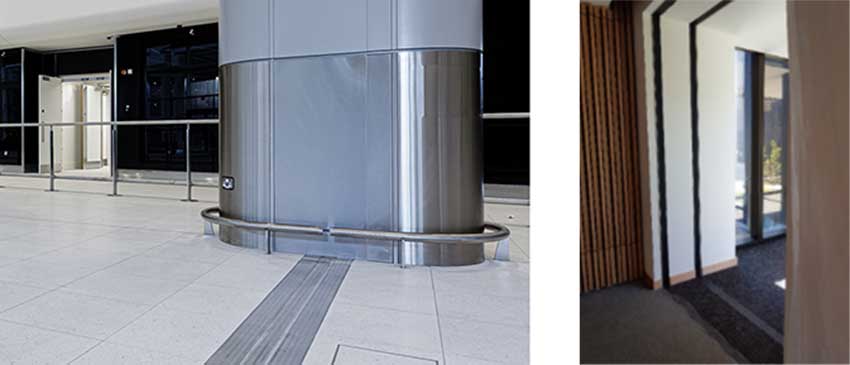
Photo courtesy of Inpro
Different types of forces on a building require different types of expansion joints to protect people and property from damage.

Photo courtesy of Inpro
In-wall toilet systems conceal the supports and plumbing in the wall and allow for a clean, elegant appearance when projects are completed.
Expansion Joint Applications and Location
The design of a multifamily building will often dictate the number, type, and location of expansion joints that are needed. A few of the most common locations where expansion joints are found include:
- Building additions in order to segregate the addition from the original structure.
- Long buildings will need a joint approximately every 200 linear feet or so as determined by the structural engineer.
- L-shaped building footprints can often require separation of the two wings at the central knuckle.
- Any dramatic changes in height may require an expansion joint to allow movement both vertically and horizontally.
Typically, the joints need to run continuously through all adjacent planes to fully separate building sections and allow independent movement. That means that any given project scope could include interior joints, exterior joints, or both, in things like walls, roofs, floors, building veneers, soffits, parking decks, patios, roofing systems, etc.
It is easy to assume that exterior expansion joints are subjected to more harsh conditions than interior, but that may not be the case, particularly for joints that cross floors. Interior joints on floors are subject to loading from foot traffic, light maintenance vehicles, or more. Therefore, when determining load requirements, consider what type of traffic will take place. All joint covers are engineered to accommodate a fairly wide range of typical building loads, but it may be important to dig a little deeper to ensure the best cover plate solution is selected. For example, does the owner utilize equipment such as scissors lifts for lighting changes in high ceiling areas? Are heavy loads of furniture and dollies going to be routinely rolled over the floor for tenant move-in and move-out situations? It is usually best to ensure the worst-case scenarios are considered when specifying systems. A slightly higher front-end cost may alleviate an ongoing facility maintenance headache for years to come.
BALANCED BATHROOM DESIGN
In multifamily buildings, sanitation, safety, and sustainability are important considerations for residents and operation staff, particularly in bathrooms. There is also the market desire in many cases to provide elegant, well-designed, and upscale bathrooms that work with the overall design intent of the project. In many cases, there is a need to provide accessible bathrooms, too, with the need to provide proper clearances and spaces around bathroom fixtures. This all needs to be balanced with an efficient layout that doesn’t chew up extra square footage, particularly when budgets are being scrutinized.
In-Wall Fixture Systems
A common European style solution to address bathroom design in multifamily units is to use fixture systems based on locating many of the functional parts behind a finished wall. Such in-wall systems improve the look of any bathroom because they remove unsightly hardware—for example, the toilet tank—from view so that they no longer interfere with the aesthetics of the overall design. In-wall systems for toilets, urinals, bidets, and washbasins are based on a concealed steel frame that attaches inside the wall and supports wall-hung plumbing fixtures. As a result, the fixtures seem to “float” in the bathroom, creating visual appeal and some added practicalities.
Photo courtesy of Geberit
In-wall fixture systems can provide the design appearance of “floating” above the floor.
In-wall fixture systems open up the entire floor for easy floor cleaning under the “floating” fixture. These fixtures also stay clean longer since there are fewer seams and crevices than traditional fixtures for dirt and germs to accumulate. Since some of the fixture is moved into the wall, greater accessibility can be achieved - there are fewer obstructions and more clear floor space than in a standard bathroom setup. Of particular importance in multifamily buildings, the system is designed to operate more quietly than a standard floor-mounted toilet, reducing noise transfer from space to space.
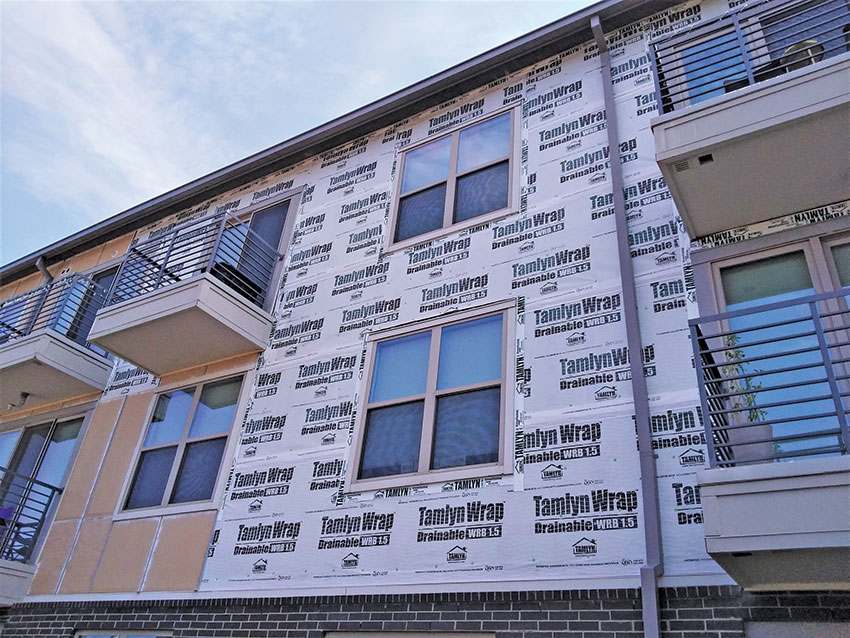
www.tamlyn.com

geberit.us
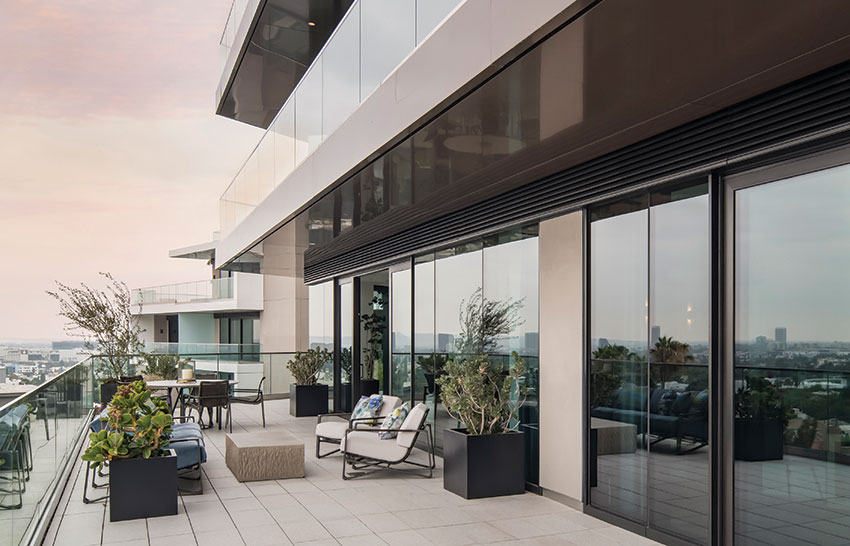
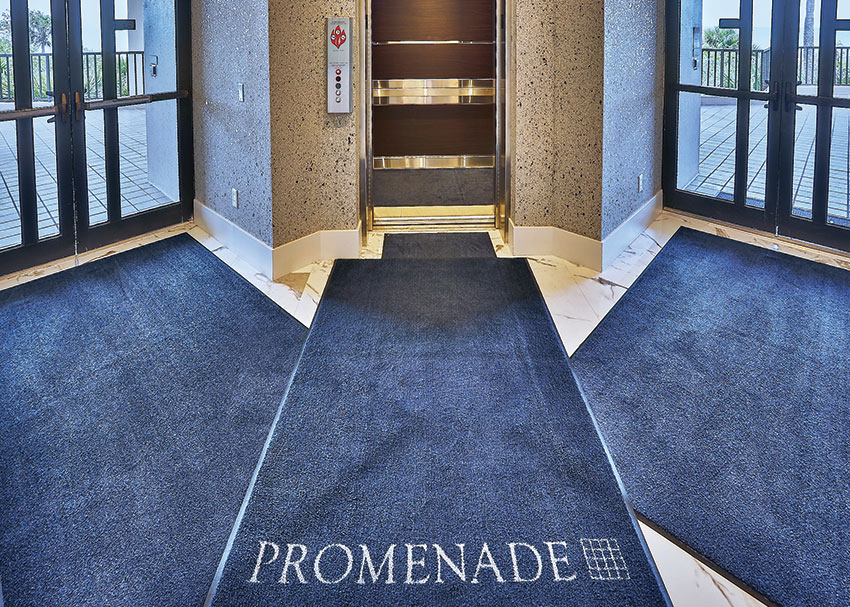
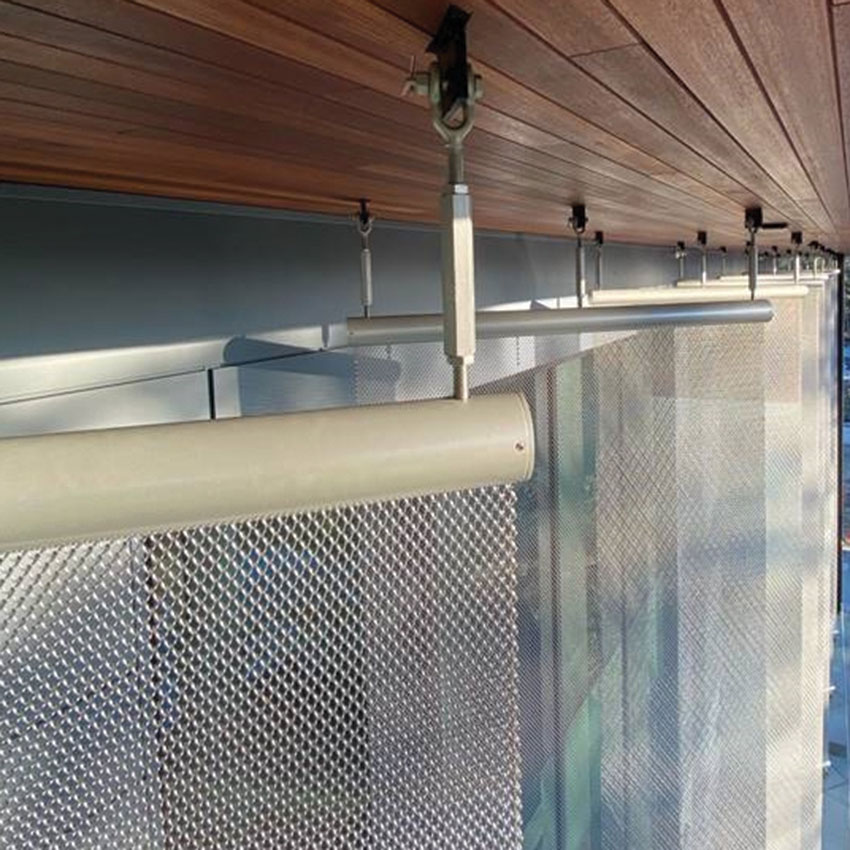
www.cascade-architectural.com









